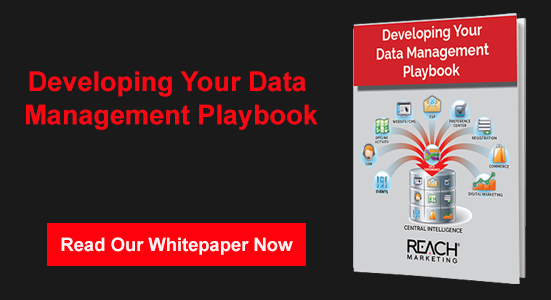Plenty of dogs chase cars, but they don’t know why and wouldn’t know what to do with a car if they managed to catch one. Most B2B businesses understand they need prospect and customer data, but once they gather it, they aren’t sure how to organize or optimize it. It sits on a little-used database, or maybe it gets spread out over a series of siloed systems, but it doesn’t generate the insight they were hoping to find.
Database services pull that underused or disorganized data out from silos, impose order, and put information back where it’s accessible. With a database manager in charge of prospect and customer files, you start to unlock the knowledge that’s already in your data while developing new ways to channel information as you collect it.
It’s far easier than teaching a dog to drive, and here’s how it’s done.
Extraction
Think about all the different data storage and transmission methods you encounter in an average day, and you’ll quickly see why database management is a growth industry. From HTML documents on the web to PDFs to proprietary formats such as Amazon’s Kindle to print media, information lives in a wide range of environments. To bring them all together in the same place, database services must first extract information from existing formats. Extraction preserves the integrity of the data while stripping away extraneous information.
Normalization
Once prospect data is in one place, it needs to be normalized before it’s ready to go back on the shelves in its new context. Normalization creates a standard format for data and makes existing data fit the new standard. If your CRM stores customer names as “Lastname, Firstname” while your email marketing list stores them as “Lastname Firstname,” for example, your database manager will choose one version and update the other entries to match it.
Normalization is also important when developing forms for new data that comes into your database. With a standard in place, you’re able to set up forms to accept data in formats that already meet it.
Organization
Newly normalized data is more uniform, but it still needs more structure to become the powerful asset it’s meant to be. Your data manager breaks up dense blocks of data into logical categories within a central database, making it easy to find what you’re looking for at a glance. This entity extraction process is a bit like shelving books; each book holds a wealth of information, but it’s only accessible when it’s properly indexed and linked to the appropriate section within the library.
Relation
Databases can do something libraries can’t: They can instantly compare information, correlating data sets to see the relationships between them. You’ll see in our other article this week how this process can help you locate and connect with your VIP customers. With clean, normalized data under the care of a database consultant, you’re ready to drive revenue and move past competitors who are still trying to make sense of how to manage data.
© Reach Marketing LLC 2017 All Rights Reserved.







